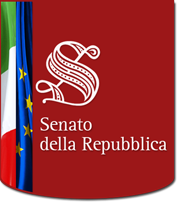Thematic Areas

For years the EU has been asking our country to reduce "the use and generosity of exemptions and of preferential tax treatments", and even according to the DEF (economic and financial document) tax expenditures should be cut: in 2017, 636 different measures were identified, subtracting an estimated 75.2 billion Euros from State revenues. Yet plenty of crucial information is lacking: we know the impact, recipients and per capita benefit for only 130 tax expenditure measures, and more than half of these measures benefit less than 30,000 taxpayers.
Between 2014 and 2020, the European Union is setting aside more than 77 billion euros for Italy in structural and investment funds: 46.5 bn in cohesion policies, and 31 bn for the common agricultural policy. However, the UVI and Italy's Financial Police reveal that in 6 out of 10 cases, these funds end up in the hands of scoundrels, swindlers and organized crime. Southern Italy is the biggest offender, accounting for 85% of structural fund fraud. Central Italy is responsible for the lion's share of offences involving agriculture and fishing.
Incentives, exemptions, benefits: every year the State spends 76 billion Euros on fiscal expenditure. But do these measures always respect the environment? Paradoxically, the answer is no. According to the first (and still incomplete) Catalogue of Environmental Subsidies, drafted by the Ministry of Environment with the technical advice of Sogesid, in 2016 about 16.2 billion Euros were allocated for SADs (EHSs - environmentally harmful subsidies), while 15.7 billion were allocated for SAFs (EFSs - environmentally friendly subsidies). Is there a way to reorganise incentive mechanisms and subsidies in order to make them more consistent with the Italy's environmental targets?
Italy's public spending accounted for a good 49.6% of GDP in 2016, but it allocated a very modest share of its resources to investments: just 2.1%, which is not enough to support all investments - especially infrastructure projects - which the country so much needs in order to support aggregate demand, improve and expand service levels, narrow the geographical economic divides and boost competitiveness.
For public administrations, especially Italian municipalities, the public-private partnership (PPP) has therefore been, over the past 15 years, a very important resource for financing new infrastructure projects (underground rail, sports facilities, TLC networks) and for providing services.
Measuring tax evasion is often described as attempting to obtain "evidence on the invisible". Several approaches have been developed to obtain evidence on tax evasion that depend on the purpose of the analysis and particularly on which effects of tax evasion one wants to measure. In this paper we propose an approach that integrates two methods that the literature has previously applied separately. Both methods adopt a microeconomic perspective. The analysis focuses on the personal income tax (PIT) in Italy (Irpef-"imposta sui redditi delle persone fisiche"-and other local income taxes) and also studies the distributive effects of this type of tax evasion
New budget balancing, electronic invoicing, split payments, code of public contracts: over the past few years the bookkeeping of Italian public bodies has been revolutionised by a number of reforms. One of the most radical ones has been, starting from 2011, the harmonisation of balance sheets: in order to comply with the new accounting systems, several mayors had to conduct a real inspection, sorting out assets and liabilities and writing off bad debts.
Together with the update memo to the DEF (Economic and Financial Document), in a few days the Government will be publishing its First Preliminary Report on Fiscal Expenditure: exemptions, deductions, tax credits, and favourable tax rates that the executive has been tasked with "reducing, eliminating or reforming", acting specifically on measures that are "unjustified" or "superceded".
On 24 August 2016, at 3:36 am, an earthquake measuring 6.0 on the Richter magnitude scale rocked central Italy. The aftermath was absolutely terrible, in terms of death toll, disrupted economy, devastated cultural heritage. The Civil Defence estimated that material damage totalled about 23,530,000 Euros, which adds on to the significant damage caused by the previous two earthquakes, which struck L'Aquila in 2009 and the Po Valley in 2012.
The Italian tax-benefit system generates a broad range of effective marginal tax rates, with positive and negative values, determining, in some cases, also a "poverty trap" (that is a marginal tax rate higher than 100 percent). The marginal and average tax rates are also sometimes decreasing with growing taxable income, while at a low level of income we have such high tax rates that a disincentive for labour supply may result.
The partnership agreement with the EU for the use of European Structural and Investments Funds is currently in full force. Italy is selecting the major works to be completed during the European seven-year programme 2014-2020. And there is a novelty: the agreement signed with the EU requires that we comply with the fundamental nexus between plan and project through self-assessment mechanisms, but it also identifies several result indicators for thematic goals, in terms of both value before the public expense and final target.





